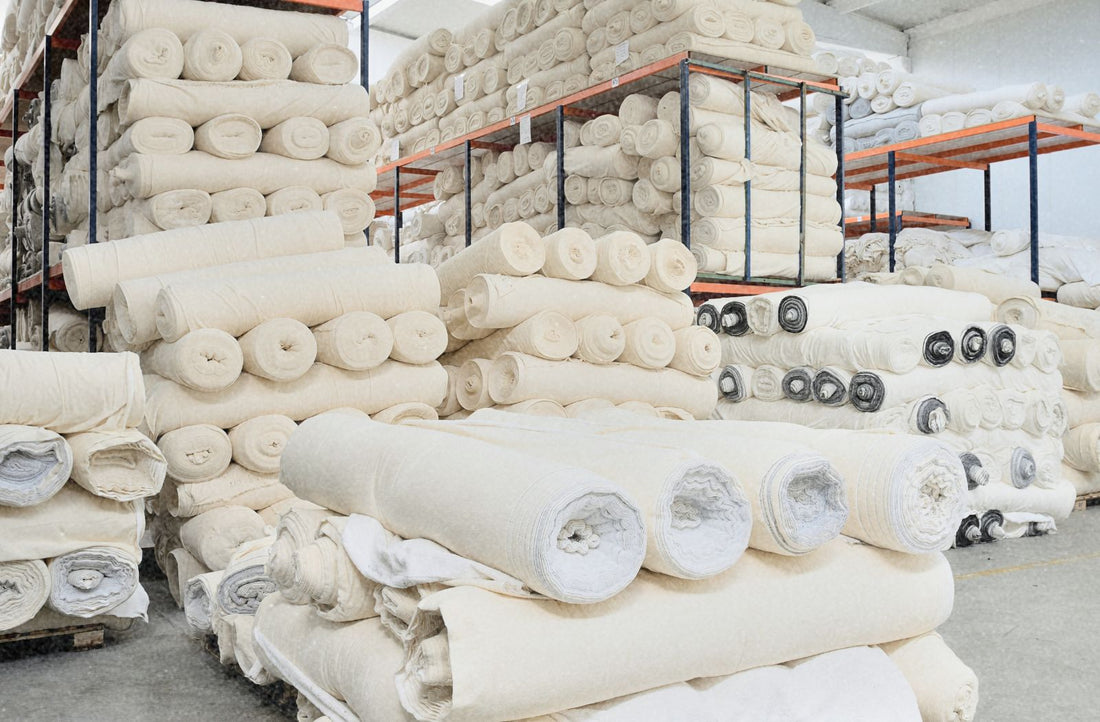In the world of fashion, where trends change faster than seasons, a significant problem is waste. One of the contributors to this issue is overproduction. Overproduction is seen both in goods that remain unsold, but also the production of fabrics, before it is turned into garments. Both unsold goods and unused fabrics are what we know as dead stock. Let’s dive into it…
What is dead stock?
There are two types of dead stock: dead stock items and dead stock fabrics.
Dead stock items refers to unsold and unused inventory that aren’t expected to be sold. This can include garments, shoes, and accessories that never found a customer. Some dead stock items might also be categorized dead stock because they are defective or damaged, but this is not always the case. Often they are in perfect condition, having simply been left over from a previous season, unsold due to overproduction, incorrect deliveries/orders.
Dead stock fabrics refer to the surplus or leftover materials from factories and textile mills that are typically discarded when they are no longer needed by brands. These fabrics can result from overproduction, canceled orders, or minor imperfections that make them unsuitable for their intended use. Rather than letting these materials go to waste, which contributes to the growing problem of textile waste in landfills, many smaller and more ethically minded apparel companies see an opportunity and purchase deadstock fabrics to create new, unique garments, giving these materials a second life.
Traditionally, dead stock was seen as a burden for fashion brands—a costly reminder of overproduction and inaccurate market predictions. However, as the fashion industry increasingly turns its attention to sustainability, deadstock is now being viewed through a different lens, transforming from a liability into an opportunity.
The upsides of dead stock
The rise of sustainable fashion has brought deadstock into the spotlight. Rather than letting these perfectly good materials go to waste, many designers and brands are now repurposing dead stock fabrics to create new, limited-edition collections.
By using dead stock materials, these companies not only reduce waste but also promote a more responsible approach to fashion. This practice helps cut down on the environmental impact associated with producing new textiles, such as water consumption, chemical use, and carbon emissions. Additionally, using dead stock fabrics result in limited-edition pieces that are unique and exclusive, appealing to consumers who value both sustainability and originality. Also, the fact that designers have to adapt their designs to fit the materials available rather than the other way around requires a creative challenge that can lead to more innovative and unique designs.
The challenges of dead stock
Despite its benefits, using dead stock isn't without challenges. In terms of sustainability and environmental impact, one should be aware that an item is not necessarily more responsibly made just because a brand uses dead stock. When something comes from dead stock you can’t always be sure whether the working conditions in the production of the garment have been fair or whether dangerous and unwanted chemicals have been used. Also, an arising issue with dead stock becoming popular is that some textile factories and mills can speculate in overproduction.
In the future perspective, the dream is that overproduction and overconsumption will be reduced completely so that there will be hardly any dead stock left. However, as things are now, the use of dead stock fabrics represents a creative and responsible solution to the waste problem in the fashion industry - and we are here for it!


